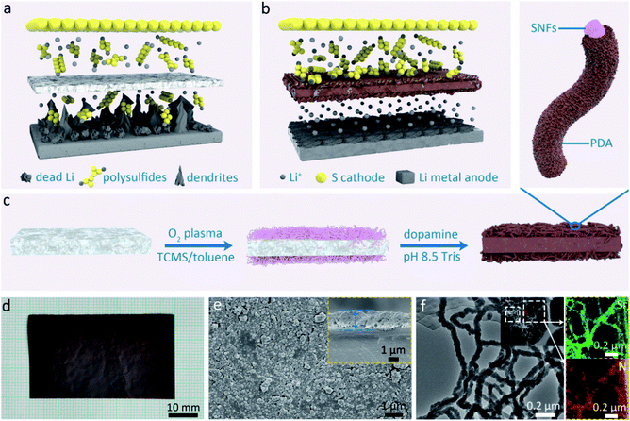Abstract:Lithium-sulfur (Li-S) batteries are very promising candidates for next-generation high-energy-storage devices. However, the uncontrollable Li dendrite growth and notorious polysulfide shuttling severely hinder their real-world applications. Herein, we report a bioinspired separator to simultaneously address these issues. The separator was prepared by the successive deposition of silicone nanofilaments and polydopamine on the Celgard (R) 2400 separator. The separator has a 3D cross-linked network with abundant O, N-containing groups and Si-O groups, which can redistribute the Li+ in the electrolyte at the molecular level to realize fast Li+ diffusion and uniform Li+ flux. Thus, long-term stable Li stripping/plating is achieved even at a high current density of 10 mA cm(-2). Meanwhile, these polar groups can act as lithiophilic sites to effectively suppress polysulfide shuttling by forming Li-O and Li-N bonds with polysulfides. Consequently, the separator enables the stable cycling of the Li-S battery with high S loading CNTs/S cathode (4.3 mg cm(-2)). The battery features slow capacity decay (0.018% per cycle over 1000 cycles at 1.0C), high specific energy density (569.2 W h kg(-1)) and high average coulombic efficiency (98.71%). This study demonstrates the potential of advanced separators for high-performance Li-S batteries by realizing stable electrochemical interfaces at the anode and cathode.

KeyWords Plus:LITHIUM METAL ANODE; LONG-LIFE; MECHANISM
Published in JOURNAL OF MATERIALS CHEMISTRY A,Volume 8 Issue 7 (3692-3700);10.1039/c9ta12921a,FEB 21 2020


